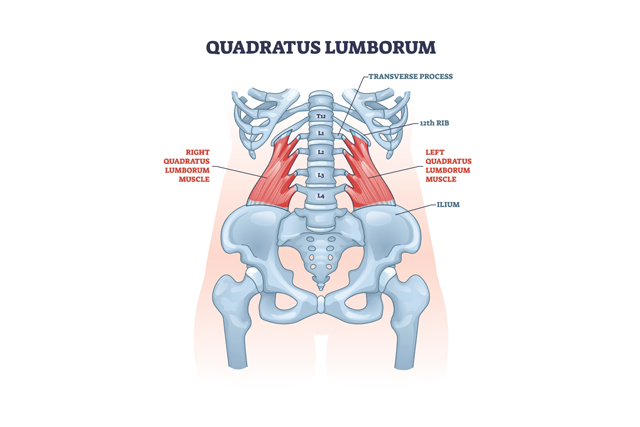Acupuncture Treatment And Proper Stretching Can Reduce The Pain Significantly
By Winston Lee L. Ac, Ph.D., KMD
Feeling “lopsided” can be more than just a nuisance; it’s a problem begging for a solution that sticks. If you are a full-time physician for acupuncture, you might have seen patients like this at least once every three months. Suppose the provider is well aware of the anatomy of the spine and supporting tissue. In that case, acupuncture provides a “level playing field” for treating acute back pain in an unbalanced body.
Most patients describe a sharp, localized low back pain that can feel like they’re “carrying the weight of the world.” This pain often “steals the spotlight,” especially when bending, twisting, or even standing. The discomfort may radiate, making it feel like the pain is “spreading like wildfire” from the lower back to the hip. Simultaneously, the patient’s body is lopsided to either side. The most usual suspect, in this case, is the ‘Quadratus Lumborum(QL) Muscle.’
The quadratus lumborum (QL) muscle resides in the deep and posterior, lateral, and inferior areas of the spine, involving the iliac crest, the transverse processes of the lumbar vertebrae, and the 12th rib. The muscular organization is complex, and it is difficult to identify precisely the actions that occur through the contraction of fibers. It is an integral part of the thoracolumbar fascia. There is still no certainty that an abnormality of QL is the primary source of back pain. The function of the muscle is working as an extensor of the lumbar spine, a stabilizer of the lumbar area, capable of tilting laterally and capable of acting as an inspiratory accessory muscle.
To accurately target the trigger point of the QL muscle, position the patient laterally on their side. Palpate to locate the area of maximum tenderness, which is slightly lateral to the lumbar vertebrae. After appropriate skin disinfection, hold the acupuncture needle at a 45-degree angle relative to the skin surface. Carefully insert the needle into the muscular tissue, adjusting the depth according to patient feedback to elicit a deqi sensation, often described as a dull ache. Successful engagement of the trigger point is crucial for optimal therapeutic results.
The approach for the QL muscle with acupuncture depends on the number of lumbar vertebrae. At the level of L3, the needle should be inserted laterally. At L4, it is safe to insert it deeply in the prone position.
Plus, we need to educate the patient to do stretching at home. Instruct the patient to lie supine on a firm surface or their back. From this position, gently have them draw one knee toward the chest while keeping the other leg extended. This movement can often alleviate immediate tension and serve as a preliminary pain relief measure. For patients more accustomed to physical activity, introducing a side-lying quadratus lumborum stretch can add another layer of relief. The stretch involves lying on one side and pulling the top ankle toward the glutes, stretching the quadratus lumborum muscle on the side facing upward. Employing such stretches in the early stages of acute pain can provide immediate relief and set the stage for more comprehensive treatment options.

































